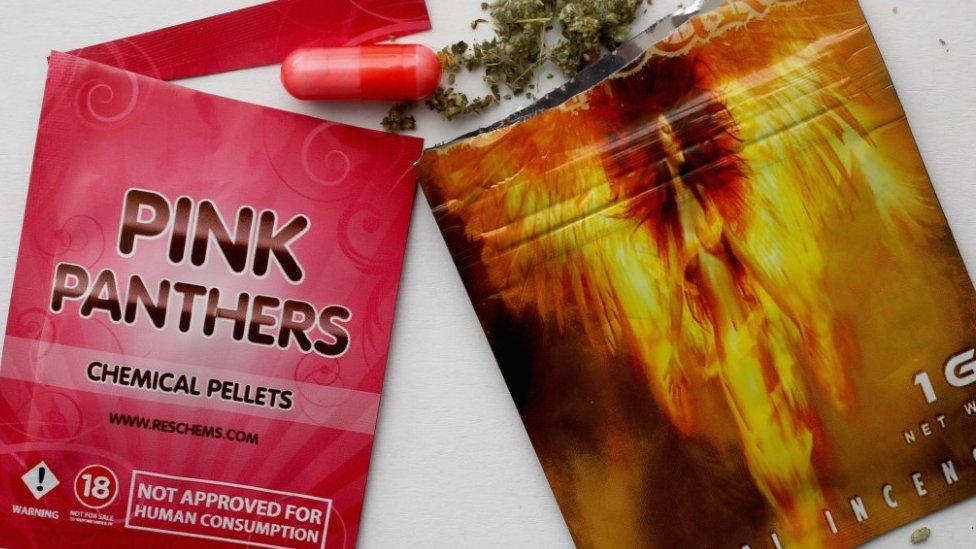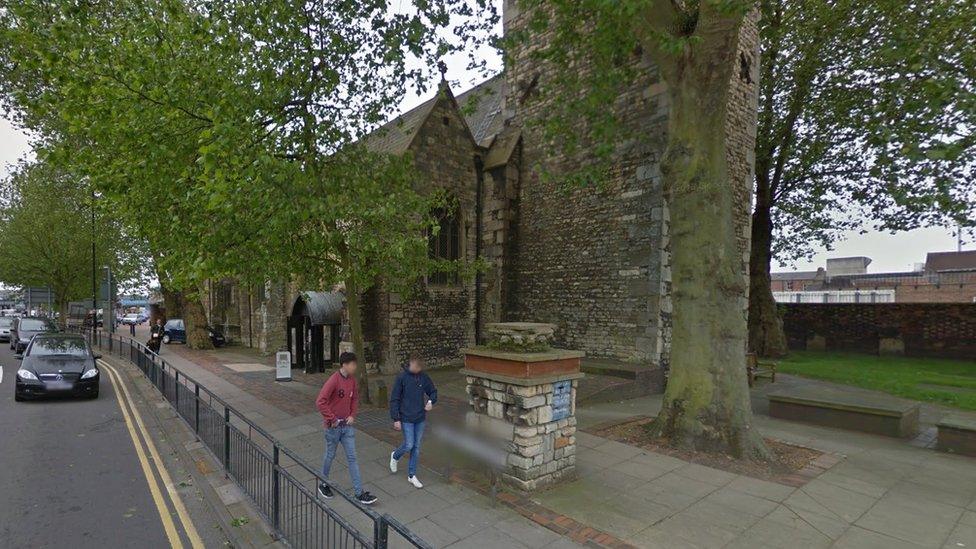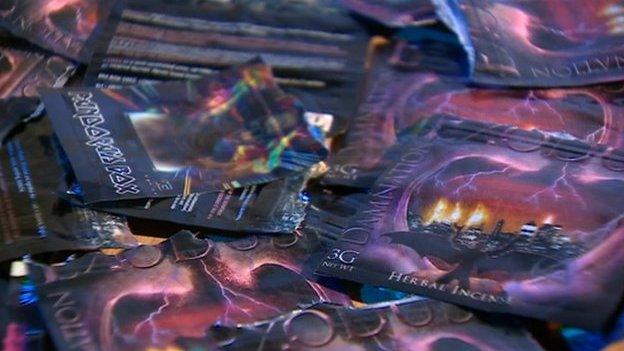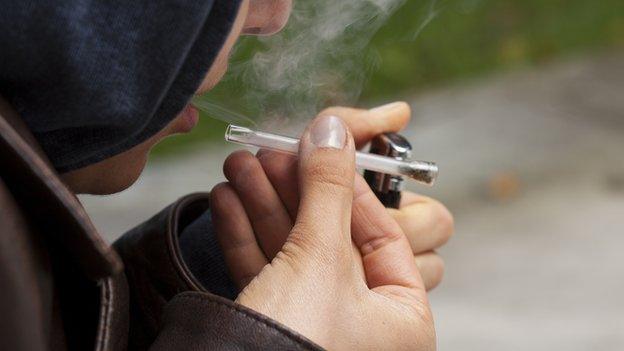Church and graveyard targeted by legal high users in Lincoln
- Published

Lincoln was the first place in the UK to introduce a ban on legal highs in public places
Church leaders in Lincoln have said a city-wide ban on so-called legal highs has compounded the problem in other parts of the city.
Last April, Lincoln became the first place in the UK to introduce a ban on new psychoactive substances (NPS) and alcohol consumption in the city centre.
Incidents involving legal highs have dropped from 402 to 259 in a year.
However, one city centre church reported cases of people collapsing and fitting on its premises.
More on this and other local stories from across Lincolnshire
Jeremy Cullimore, a priest at St Mary le Wigford Church, said the problem had moved to other parts of the city, including the church.
He said the church had experienced a number of issues with people camping out in the grounds.
"We were getting somebody fitting, or collapsing, at least twice a week, and were having to call out ambulances," he said.
"There was a very real fear people were going to die."

Priest Jeremy Cullimore said St Mary le Wigford Church had been targeted by "legal high" users
He said despite problems at the church the council was doing its best, and was unable to bring "peace on earth and goodwill to all men".
There have also been further reports of people camping out in a graveyard on Beaumont Fee and taking legal highs, close to the city's police station.
The number of incidents involving NPS in the city increased from seven to 820 between 2010 and 2014.
Sam Barstow, from the authority, said while there had been a reduction in the use of new psychoactive substances "there is more work to do".
He said: "We were always conscious that this was never going to eradicate the issue entirely, but we've had in excess of 30 successful prosecutions under the order.
The Psychoactive Substances Act, external makes it an offence to produce, supply, offer to supply, possess with intent to supply, or possess on custodial premises.

What are so-called legal highs?

So-called legal highs are substances which produce the same, or similar, effects to drugs such as cocaine and ecstasy, but are not controlled under the Misuse of Drugs Act
In many cases, they are designed to mimic class A drugs, but are structurally different enough to avoid being classified as illegal substances, so it is legal to possess and use them
This is because there is not enough research about them to base a decision on
They cannot be sold for human consumption, but are often given labels like plant food to get round the law
Most fall into three main categories: stimulants, sedatives or hallucinogens
The chemicals - known as New Psychoactive Substances (NPS) - are made on an industrial scale in countries such as China and India and then packaged and distributed throughout Europe

- Published26 May 2016

- Published20 June 2015

- Published1 April 2015

- Published24 February 2015
